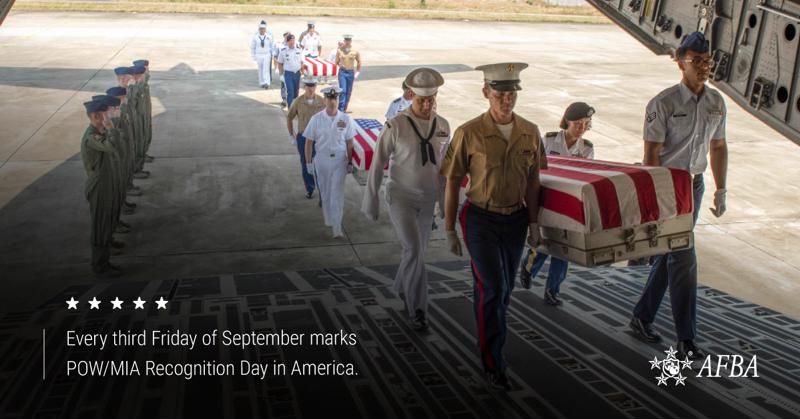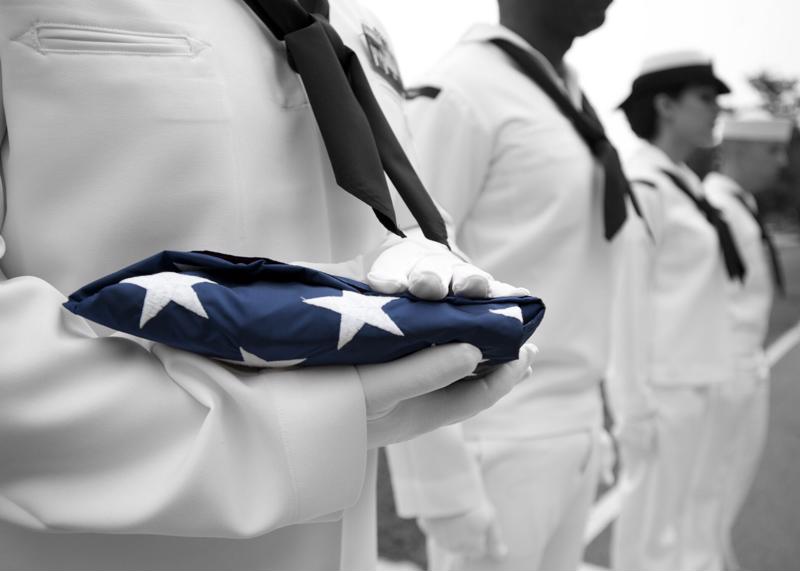The words "You are not forgotten" are written on the familiar black-and-white POW/MIA flags flown across the country. While former and current prisoners of war and those missing in action are remembered year-round, every third Friday of September marks POW/MIA Recognition Day in America. That date in 2019 will be Sept. 20, a Friday to honor the sacrifice and memory of all POW/MIA servicemembers, as well as their families. Here's more information about the day of remembrance, POW/MIAs and what you can do.

Established in 1979
POW/MIA Recognition Day is not tied to any one armed conflict, but was began after a push by veterans of the Vietnam War. In 1979, Congress passed resolutions making the observance official while President Jimmy Carter issued a proclamation. Subsequent presidents have done the same to commemorate the date and its importance. During the first recognition day, a ceremony was held at the National Cathedral in the District of Columbia, whole other smaller services were held across U.S. military installations and communities. The day was initially held in July, before being moved to the third Friday of September in 1986.
As noted by the Defense POW/MIA Accounting Agency, Americans prisoners of war and unaccounted for date back to the American Revolution, but it took more than 200 years for the country to recognize them. Appreciating the importance of POW/MIA Recognition Day means understanding the sacrifice of those fighting to protect the U.S.. According to the accounting agency,
- More than 82,000 Americans remain missing from WWII (72,669 missing), the Korean War (7,624), the Vietnam War (1,587), the Cold War (126), and the Gulf Wars/other conflicts (6).
- 75% of losses happened in the Indo-Pacific.
- 41,000 of the missing are presumed lost at sea (i.e. ship losses, known aircraft water losses, etc.).
A separate report prepared for Congress in 2005 detailed the number of prisoners of war:
- 130,201 World War II servicemembers were imprisoned; 14,072 them died.
- 7,140 Korean War servicemembers were imprisoned; 2,701 of them died.
- 725 Vietnam War servicemembers were imprisoned; 64 of them died.
- 37 servicemembers were imprisoned during conflicts since 1991, including both Gulf wars; none are still in captivity.
Iconography a big part of recognition
The POW/MIA flag is perhaps one of the more recognized symbols in America today, regularly flown at homes, post offices and VA clinics around the country. The flag itself actually predates POW/MIA Recognition Day. In 1970, the wife of a servicemember declared MIA in the Vietnam War contracted an artist and worked with the National League of POW/MIA Families to create an indelible image that would help create attention for their cause and honor POW/MIAs.
In 1982, it would go onto to become the only other flag to be flown at the White House. President Bill Clinton further elevated the importance of the flag and POW/MIA Recognition by designating the date as one of six when the POW/MIA flag is required to be flown at federal government locations: Armed Forces Day, Memorial Day, Flag Day, Independence Day and Veterans Day are the others.
Posters have been created to mark POW/MIA Recognition Day since at least 1999. These illustrated efforts have also become imagery associated with the day.
How POWs/MIAs are honored
Typically, ceremonies are held at military installations, federal government buildings, war memorials and in communities. The Pentagon holds an annual event, while some veterans groups will hold candlelight vigils and aerial forces fly a missing-man formation. Another form of recognition is the missing-man table. These ritual meals are commonly held on POW/MIA day: A seat and setting is left open for the POW/MIA being remembered. The Defense POW/MIA Accounting Agency has more information and etiquette for how to honor those held prisoner or unaccounted for.


